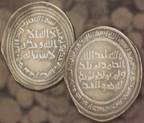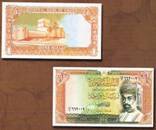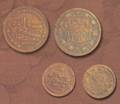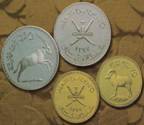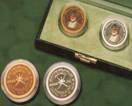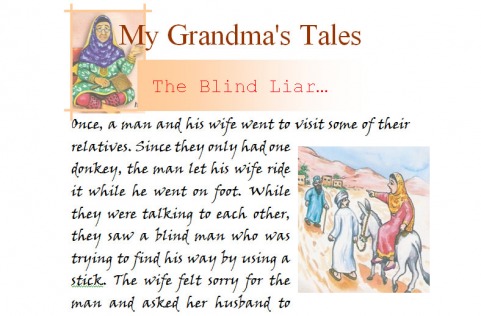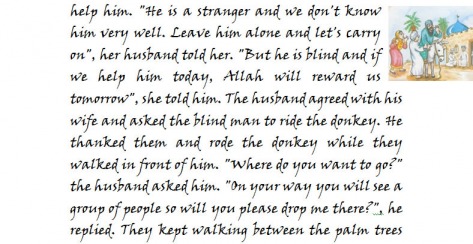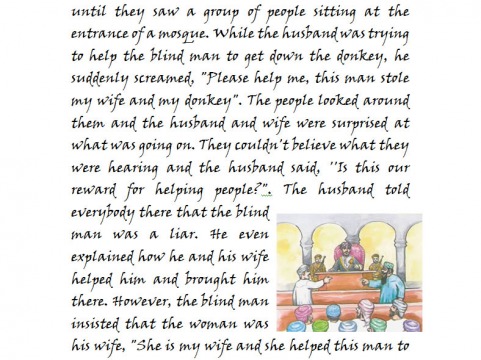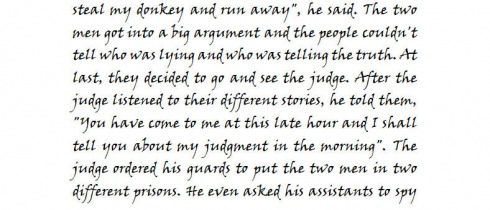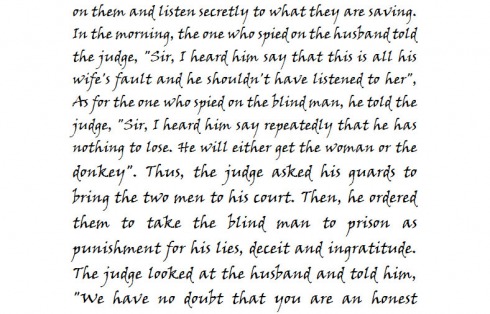Coins and Currencies in the Sultanate of Oman
Being at the crossroads of the Middle East, East Africa, India and the Far East, Oman has a rich seafaring history. Through its ports moved the luxury goods desired by both the east and the west. As a trading nation, it became familiar with the coins of many lands and was able to imbibe the best.
Oman itself has the distinction of possessing the oldest Islamic mint in the Arabian Peninsula. The earliest coin struck here, a silver dirham from the reign of the Umayyad Caliph 'Abd al Malik bin Marwan, bears the name of the country Oman.
The earliest coin known to bear the mint name 'Oman' is a dirham dated 81H. This piece is without doubt the earliest dated object in metal, stone, wood or parchment which preserves the name Oman. It is also the first recorded Islamic coin from the Arabian Peninsula.
At the beginning of the Fourth Century, Ahmad bin Hilal was the governor of Oman.His standard Abbasid dirhams are known from the years 303,304 and 305. The coin is a standard design dirham with the governor's name 'Abd al-Halim bin /Ibrahim inscribed in two lines on the main side and the name of the Caliph al-Muqtadir billah on the reverse side.
Zanzibar, formerly a part of Oman, acquired its own coinage under Sayyid Barghash bin Said. The gold and silver was based on the Egyptian currency and was struck by the Brussels mint bearing the date 1299 Hijri.
In 1908, the Heaton Mint prepared an issue of three denominations on the new decimal standard for Zanzibar, before it had been linked to the British East Africa and Uganda Protectorate. The main sides of all the coins bore the same ornamental legend: al-Sultan Ali bin Hamud, and the reverse a representation of a palm tree with two dolphins at its base with the date 1908.
The first coinage (baisa or quarter anna) issued by Al-Sultan Faysal bin Turki bin Said bin Sultan(1893-1311 Hijri) In 1367/1948, Sultan Said bin Taymur ordered the first silver coinage for Dhofar from the Bombay Mint. This was accompanied by a small number of gold replicas for private distribution by the Sultan. In 1378/1958, Sultan Said bin Taymur issued his first dollar- sized coin.
By 1389/1969, the Sultan Said bin Taymur considered that Oman was economically strong enough to permit the introduction of a uniform national currency of both banknotes and coins which would replace all other currencies then circulating in the country. The new Saidi currency of the Sultanate of Muscat and Oman was placed in circulation.
In 1397/1977, two sets of commemorative coins were issued. The first of these was three-coin world wildlife Conservation Issue.
Commemorative coins issued by Central Bank of Oman on the Silver Jubilee anniversary -25th National Day.
In 1405/1985, the Central Bank of Oman began to replace the third issue of banknotes with a new series which features a portrait of His Majesty Sultan Qaboos bin Said on the front and revised vignettes on the reverse.
Oman itself has the distinction of possessing the oldest Islamic mint in the Arabian Peninsula. The earliest coin struck here, a silver dirham from the reign of the Umayyad Caliph 'Abd al Malik bin Marwan, bears the name of the country Oman.
The earliest coin known to bear the mint name 'Oman' is a dirham dated 81H. This piece is without doubt the earliest dated object in metal, stone, wood or parchment which preserves the name Oman. It is also the first recorded Islamic coin from the Arabian Peninsula.
At the beginning of the Fourth Century, Ahmad bin Hilal was the governor of Oman.His standard Abbasid dirhams are known from the years 303,304 and 305. The coin is a standard design dirham with the governor's name 'Abd al-Halim bin /Ibrahim inscribed in two lines on the main side and the name of the Caliph al-Muqtadir billah on the reverse side.
Zanzibar, formerly a part of Oman, acquired its own coinage under Sayyid Barghash bin Said. The gold and silver was based on the Egyptian currency and was struck by the Brussels mint bearing the date 1299 Hijri.
In 1908, the Heaton Mint prepared an issue of three denominations on the new decimal standard for Zanzibar, before it had been linked to the British East Africa and Uganda Protectorate. The main sides of all the coins bore the same ornamental legend: al-Sultan Ali bin Hamud, and the reverse a representation of a palm tree with two dolphins at its base with the date 1908.
The first coinage (baisa or quarter anna) issued by Al-Sultan Faysal bin Turki bin Said bin Sultan(1893-1311 Hijri) In 1367/1948, Sultan Said bin Taymur ordered the first silver coinage for Dhofar from the Bombay Mint. This was accompanied by a small number of gold replicas for private distribution by the Sultan. In 1378/1958, Sultan Said bin Taymur issued his first dollar- sized coin.
By 1389/1969, the Sultan Said bin Taymur considered that Oman was economically strong enough to permit the introduction of a uniform national currency of both banknotes and coins which would replace all other currencies then circulating in the country. The new Saidi currency of the Sultanate of Muscat and Oman was placed in circulation.
In 1397/1977, two sets of commemorative coins were issued. The first of these was three-coin world wildlife Conservation Issue.
Commemorative coins issued by Central Bank of Oman on the Silver Jubilee anniversary -25th National Day.
In 1405/1985, the Central Bank of Oman began to replace the third issue of banknotes with a new series which features a portrait of His Majesty Sultan Qaboos bin Said on the front and revised vignettes on the reverse.
My GrandMother's Story
F
Bahla was the capital of Oman between the 12th and early 17th century. Bahla is named after the old Bahila tribe, which ruled the region. The Nabhan dynasty ruled it until the Yarubis took it over in 1650s. The prehistoric site of Bahla was discovered in 1973, but the real excavations started at the beginning of 1980s.
Bahla Fort:
Bahla Fort was declared a World Heritage Site by UNESCO in 1988. The wilayat is also sur-rounded by a 15km wall. Bahla Fort is the first fort constructed by the Persians during the pre-Islamic era, 1400 years ago. The fort underwent three phases of construction. The first in 830 AD, next in 1624 and the third in 1868. The construction materials used at that time were stones, clay palm trunk, wood, straw, and plaster. Bahla has 15 entrances and 132 towers of which only 6 remain. Legend has it that this wall was built and designed by a woman named Geitha 600 years ago.
Jibreen Fort:
One of the prominent landmarks in Bahal is Jibreen Fort which is deemed the jewel in the Omani historical crown. The fort is located-ed at about 10 kilometers out in the open desert. Jibreen fort was built by Imam Bil' arab bin sultan during the 17th century. The rooms have most elaborate carvings and the ceilings are painted with flowers and symbols. The tomb of Iman Bil'arab is still on the premises of the fort. The fort is a walled triangular-shaped building which has 132 watch-towers with guardrooms. It con-sists of three floors and 55 rooms through which Falaj gibrin flows.Jabrin castle was restored and furnished in 1982. The fort also served as a living accommoda-tion for the Imam.
Pottery making in Bahla:
Pottery making is a famous art throughout the Sultanate. How-ever, Bahla is the hub of pottery making. Potters in Bahla are born with magic in their fingers. The clay used in pottery comes from the wadi floor, and men trample on it to make it pliable. Bahla has hundreds of potters working at numerous workshops. When it comes to pottery industry, Bahla is a market leader. Moreover, there is a big demand for pottery products especially by tourists.
Bahla Fort:
Bahla Fort was declared a World Heritage Site by UNESCO in 1988. The wilayat is also sur-rounded by a 15km wall. Bahla Fort is the first fort constructed by the Persians during the pre-Islamic era, 1400 years ago. The fort underwent three phases of construction. The first in 830 AD, next in 1624 and the third in 1868. The construction materials used at that time were stones, clay palm trunk, wood, straw, and plaster. Bahla has 15 entrances and 132 towers of which only 6 remain. Legend has it that this wall was built and designed by a woman named Geitha 600 years ago.
Jibreen Fort:
One of the prominent landmarks in Bahal is Jibreen Fort which is deemed the jewel in the Omani historical crown. The fort is located-ed at about 10 kilometers out in the open desert. Jibreen fort was built by Imam Bil' arab bin sultan during the 17th century. The rooms have most elaborate carvings and the ceilings are painted with flowers and symbols. The tomb of Iman Bil'arab is still on the premises of the fort. The fort is a walled triangular-shaped building which has 132 watch-towers with guardrooms. It con-sists of three floors and 55 rooms through which Falaj gibrin flows.Jabrin castle was restored and furnished in 1982. The fort also served as a living accommoda-tion for the Imam.
Pottery making in Bahla:
Pottery making is a famous art throughout the Sultanate. How-ever, Bahla is the hub of pottery making. Potters in Bahla are born with magic in their fingers. The clay used in pottery comes from the wadi floor, and men trample on it to make it pliable. Bahla has hundreds of potters working at numerous workshops. When it comes to pottery industry, Bahla is a market leader. Moreover, there is a big demand for pottery products especially by tourists.
